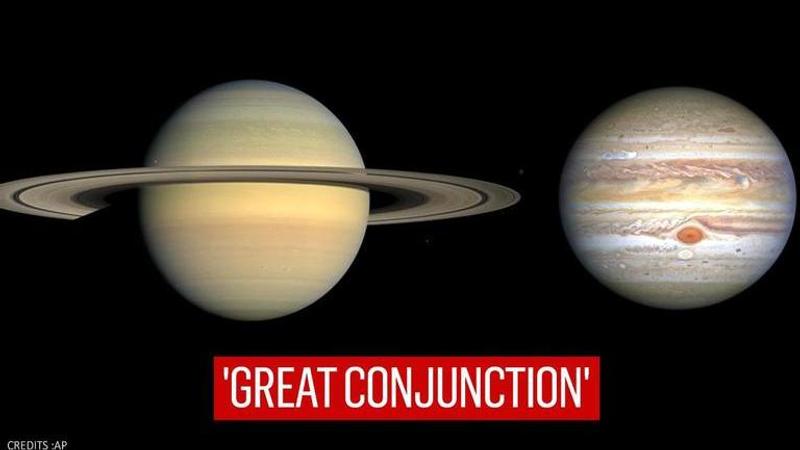Published 18:53 IST, December 21st 2020
Great Conjunction: How to capture Saturn & Jupiter's 'planetary dance'? NASA shares guide
NASA recently informed that two of the solar system’s biggest planet, Saturn and Jupiter, will be coming together in 'great conjunction' on December 21.

NASA recently informed that two of the solar system’s biggest planet, Saturn and Jupiter, will be coming together in rare conjunction on December 21. While taking to YouTube, the US space agency informed that the two planets will be closer than they have ever been since the Middle Ages, which is more than 400 years. Over the recent days, Jupiter and Saturn were doing a “planetary dance” and now that will result in the “Great Conjunction” on Monday.
In a separate Tumblr post, NASA suggested that one must find a spot with an open view of the sky like a field or park to view the great conjunction unfold. As both the planets are bright, they can be viewed from most cities. An hour after the sunset, one must look to the southwestern sky. While Jupiter will look like a bright star, Saturn, on the other hand, will be slightly faster and will appear slightly above and to the left of Jupiter.
NASA said, “The planets can be seen with the unaided eye, but if you have binoculars or a small telescope, you may be able to see Jupiter’s four large moons orbiting the giant planet”.
Tips and tricks to capture the ‘great conjunction’
Further, if one is planning to photograph the rare sighting, the US space agency said that a DSLR camera or even a mobile phone camera may work out. NASA even issued a few tips and tricks to help space enthusiasts to capture the event. Photographers will have one to two positions from when the two planets first appear when they set. The two planets will be visible in the early evening till late evening, so a photograph from the same location may look completed different with the changing lights.
Moreover, NASA even suggested the use of a tripod, which will help hold the camera steady while taking longer exposures. However, if one doesn’t have a tripod, they can brace their camera against a tree, fence or a wall to click several-second exposure. The view can also be enhanced with the crescent moon’s positions as well.
“The crescent Moon will pass near Jupiter and Saturn a few days before the conjunction. Take advantage of it in your composition!” NASA wrote.
Updated 18:51 IST, December 21st 2020




